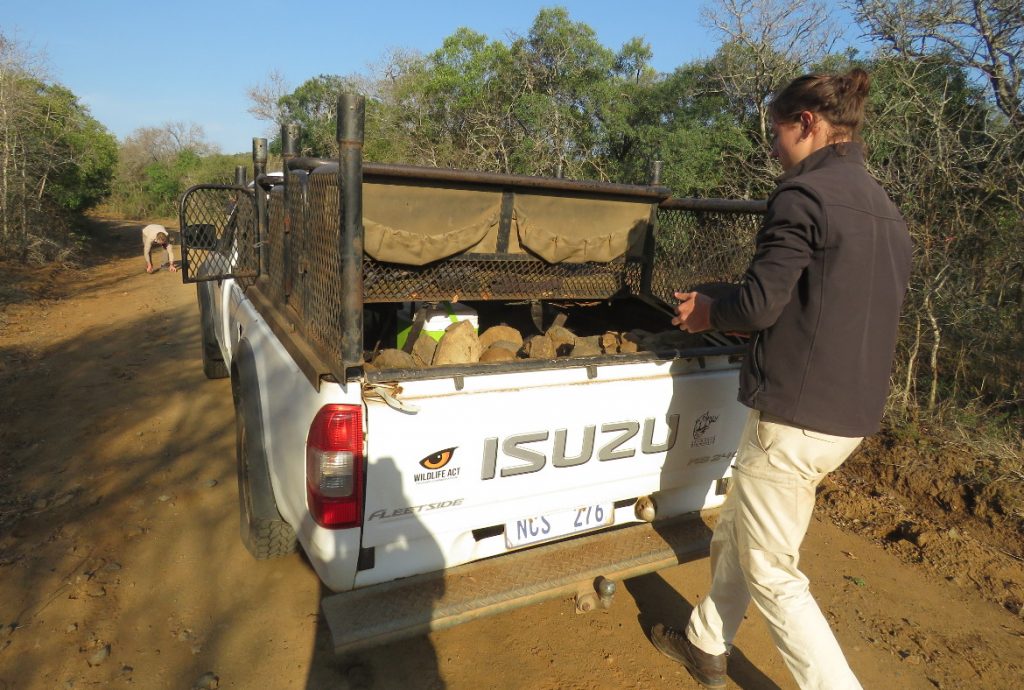Investment in natural resource restoration is important in any protected area to contribute to building resilience of the natural habitat itself. Over time, surface soil loss, gullies and dongas caused by soil erosion can have a negative impact on both the productive capacity of the land, as well as the drivability of them for important monitoring and anti-poaching services.

Driving the vast roads across the reserve as we do whilst monitoring; chasing up on the Wild Dogs, intercepting the Cheetah movements, reaching that pride of Lions at the waterhole, the roads may often become increasingly deteriorated through regular use. In addition to this, the variable weather patterns of rain and/or wind facilitate the erosion further by disturbing any surface soils on the roads. Due to this, rehabilitation management and maintenance follow-up work is often needed to be done.

The Wildlife ACT Endangered and Priority Species Conservation and Habitat Management course covers the “Habitat Management” section with some additional field practice where we assist the reserve in maintaining some of the particularly degraded roads that are flagged for rehabilitation. By collecting rocks, stones and brush, the team packs these dongas in the roads, slowing down any additional water flow (from intense rains) and trapping soil behind and within it; this way, making the road drive-able again, as well as facilitating an erosion control plan.
When using locally-collected rocks and stones, we must remember to be cautious and careful not to start a new erosion problem where you remove them.

Material used to build a wall can range from rocks or bricks and cement to packed stones incorporating shade cloth or geofabric, as long as it slows down the water and builds up soil and silt in which vegetation can establish.
“To combat donga formation, the speed of the water, that carries soil away, must be slowed,” says LD van Essen of the Centre for Wildlife Management at the University of Pretoria. “Objects placed in the water’s way will have this effect. Old tyres, rocks and rubble can be used.”
If the donga is in an advanced stage, construct a weir at the head to prevent it from spreading further upstream. This acts like a wall, slows down water flow and traps soil behind it. The soil fills up the donga in time and vegetation soon establishes itself.

Sheet erosion and donga formation are the two most serious forms of erosion. Both types require intervention through a rehabilitation management plan and follow-up maintenance. A hallmark of sheet erosion is large bare patches of veld with a hard surface and low amounts of organic material, making plant growth virtually impossible. A donga forms when flowing water cuts a channel into the soil. Where ground falls away, a donga head forms that gradually works its way upstream, widening and deepening the donga.
Learn more about our Endangered & Priority Species Conservation & Habitat Management Course

